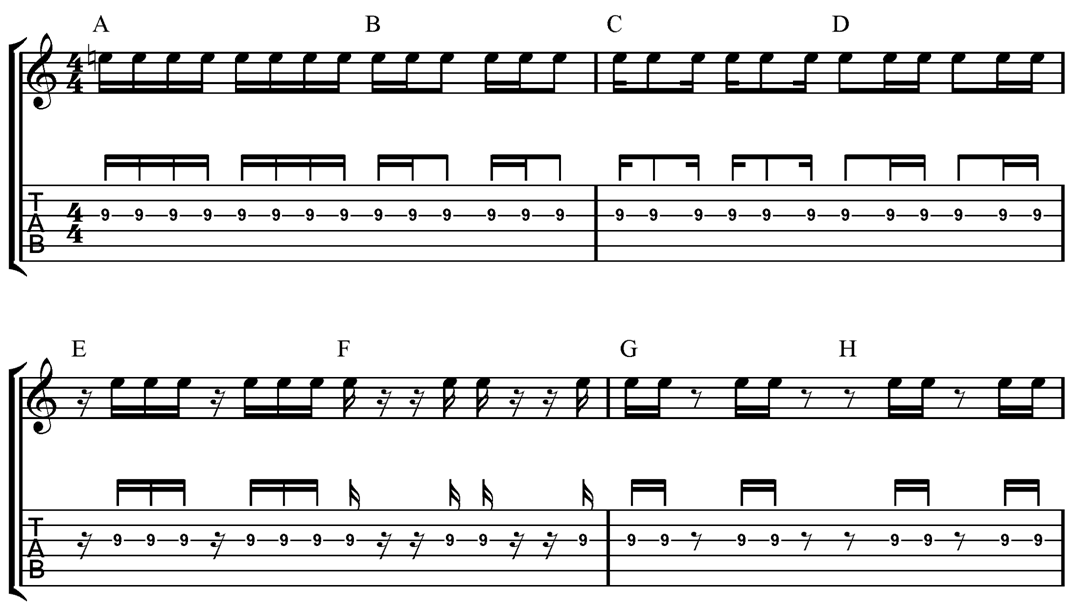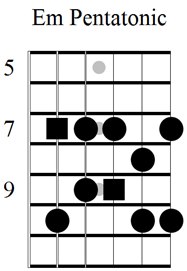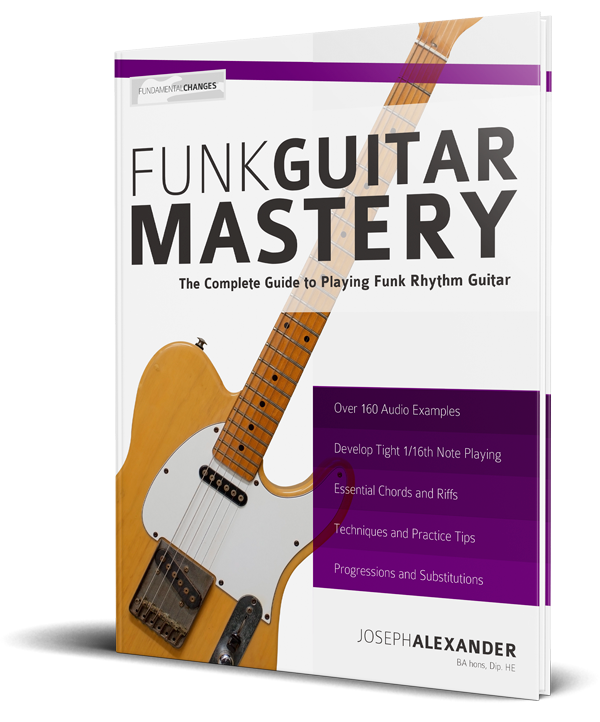Single Note Funk Riffs
Rhythmically, there is very little difference between using single note lines and using chords to build funk riffs. The key to both approaches is staying in time and in the pocket of the groove.
Rhythmic accuracy is achieved by practicing with backing tracks, drum machines or a metronome. If you’re lucky enough, find yourself a bass player and drummer and jam out your ideas as much as you can.
The key point to remember when playing single note lines, just as with chord playing, is that the picking hand must constantly be moving up and down in 1/16th notes in order to stay in time.
As you know, there are only two events that can happen to the picking hand; hit the string or miss the string. As long as the down-up movement stays consistent and in time then we don’t have to worry about it too much. In the fretting hand, there are many more options available.
Most single note funk riffs are created by using notes from the minor pentatonic scale. Other scales such as the Dorian and Mixolydian modes are used, but funk riffs are mainly pentatonic.
To get the feel of things, start by practicing the 1/16th note permutations from earlier chapters on a single note. To recap, here some of the main possibilities.

Using muted notes together with backing track one to make sure you are comfortable playing all these groupings in time. Refer back to chapter two if you have any challenges.
Now, use just two or three notes from the E minor pentatonic scale, make short riffs using these rhythms.

Remember to keep your picking hand moving up and down in 1/16th notes at all times.
Funk riffs Example 11a:

Pick hard so that you can feel the strings resisting your pick. Also, experiment by changing the location of the pick along the string. Try picking towards the bridge and gradually move towards the neck. You may find a sweet spot that really makes your guitar tone pop out.
Try the same exercise again, but this time add a 1/16th note scratch on the 1/8th notes:
Funk riffs Example 11b:

You can hear that while the pitched notes are in the same place, the rhythmic effect is quite different.
Funk guitar is full of subtleties like this and they can only be internalised through practice and playing.
Now take the same riff, but this time use a hammer-on instead of the second pick. Once again, you will notice a slightly different inflection to the groove.
Funk riffs Example 11c:

To perform a strong hammer-on, pick the first note (7) hard, and without picking again, hammer the
third finger down onto the 9th fret. Be careful to make sure your notes are equal in both rhythm and volume. Listen carefully to the audio track to hear how this should sound.
If you need to work on your technique, check out my book Complete Technique for Modern Guitar.
Here’s a new rhythm that allows us to combine hammer-ons with pull-offs.
Begin this exercise by picking every single note. Remember to keep your plectrum moving, even on the longer notes.
Funk riffs Example 11d:

Try playing this phrase again but this time add in pull-offs whenever the melody descends on the same string.
Funk riffs Example 11e:

Next, try using a hammer-on to play the ascending notes.
Funk riffs Example 11f:

“The artists you work with, and the quality of your work speaks for itself.”
Tommy Emmanuel
© Copyright Fundamental Changes Ltd 2024
No.6 The Pound, Ampney Crucis, England, GL7 5SA

